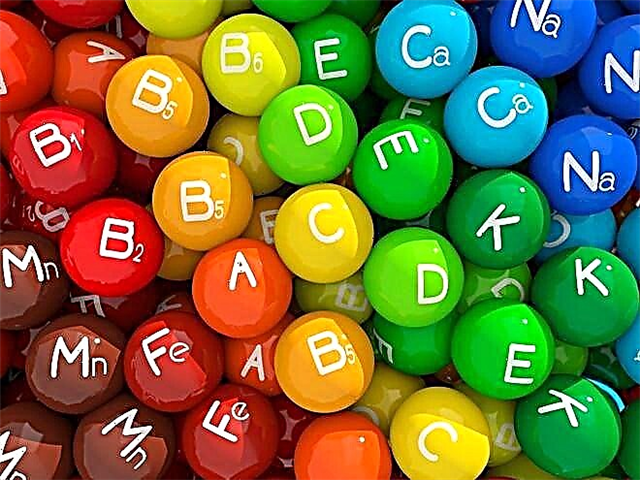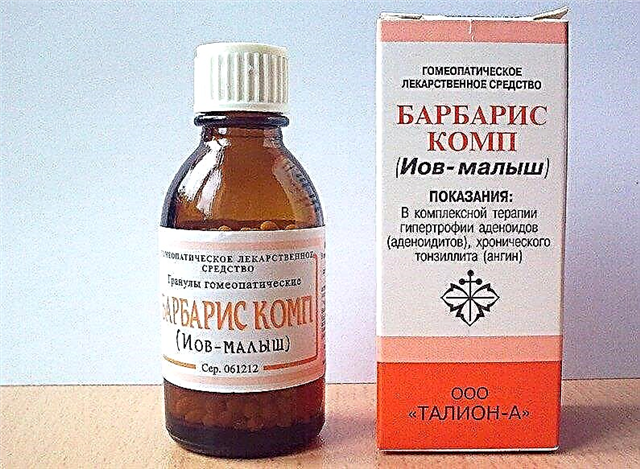Roseola virus refers to diseases that appear suddenly and begin with a fever. Such a diagnosis confuses parents, since the doctor can determine it even during teething. There are several reasons for the development of infant roseola (or sudden exanthema). Parents need to be able to recognize when a problem occurs.

Roseola virus most commonly affects children under 2 years of age
What is Roseola (Three Day Fever)
Roseola is caused by the herpes virus (Herpes virus 6). Immediately after birth, the baby receives antibodies from the mother, but their number decreases by 4 months. After that, the newborn's body becomes susceptible to negative factors and various viruses and infections.
The complexity of the virus defeat is that it is often confused with allergic reactions or classic ARVI. Often, roseola in infants is called pseudo-rubella, since development is accompanied by an increase in temperature, skin rashes and signs of intoxication.
There is a high probability of the appearance of roseola in a newborn in the period from 6 months to 3 years. Further, the baby develops strong immunity. The second time, the child, as a rule, does not get sick. The disease is characterized by an incubation period (the interval from the moment the pathogen enters the body until the first symptoms appear). It can last from 5 to 15 days.
How is roseola spread
Usually an adult is the carrier of the disease. A child picks up the virus through shared utensils, toys, and personal hygiene items. The virus is often spread by airborne droplets.
On a note. To date, the exact scheme of transmission of the disease by doctors has not been established.
After entering the body, roseola pathogens begin to multiply actively. They enter the baby's bloodstream and "settle" in the urine and lymph nodes. After that, the appearance of exanthema is observed, it lasts about a week.
A child becomes a carrier of the disease from the moment of infection to a decrease in body temperature. If the baby has not been ill with roseola before 3 years, then he will develop immunity. The majority of cases of damage (about 90%) occur at the age of up to 2 years. Adults rarely suffer from this ailment.
Reasons for the appearance of roseola in children
The first signs of a virus infection appear approximately 5 days after contact with a sick person. Moreover, a large child becomes a carrier of the disease while he has a high temperature, and for several days after its decrease.
When an infected person sneezes or coughs, pathogens are released into the air. They settle on the surface of surrounding objects (toys, furniture, clothes, blankets).
This is how the virus enters the body of another child. The weakened immunity of the baby contributes to the active development of the disease. The susceptibility of the child's body to the virus increases after six months - the amount of antibodies received from the mother decreases.

Antibodies to the baby come from the mother, so frequent attachment to the breast helps to quickly cope with the virus and recover
A common symptom of sudden roseola is a skin rash. There are 2 types of pathogenic mechanisms that provoke the appearance of rashes:
- Virus. Disease-causing bacteria enter the bloodstream and are quickly distributed throughout the body.
- Pathological reaction. Small rashes on the body are the result of the interaction of the pathogen of roseola and cells of the immune system. This is how the disease is formed against the background of rubella.
On a note. Against the background of the development of herpes type 6, the likelihood of chronic fatigue syndrome increases.
The risk group includes children who suffer from diseases of the immune system:
- HIV pathology;
- oncological diseases.
In babies with similar complex diagnoses, roseola is very difficult. The mild form lasts no more than 10 days and does not provoke complications. During this period, the baby is isolated and helped to fight the pathogen (they enhance nutrition, add vitamin complexes).
The main symptoms of baby roseola
Outbreaks of the disease in infants can appear at any time of the year. The following symptoms signal the defeat of the roseola virus:
- the acute phase is characterized by the appearance of a high temperature of 39-40 ° C (the difficulty is that it is knocked down by antipyretic drugs for 3-4 hours and rises again);
- there are no other signs of SARS (cough, runny nose);
- a small red rash appears on the body, which indicates the penetration of the virus into the skin layers (the temperature disappears or decreases);
- possibly an increase in lymph nodes.
After a few days, the child's rash on the body disappears with roseola. After the condition of the crumbs is normalized and the fever does not become, the baby will no longer remain a distributor of the disease. He can already be allowed to communicate, walk.
In addition to the above symptoms, which are typical for roseola, there are specific symptoms:
- irritability and tearfulness;
- swelling of the eyelids;
- weakness, tiredness;
- mild diarrhea;
- decreased appetite.
On a note. Roseola is a common disease for a small infant, often simply not diagnosed. If the disease is not too severe, then it is confused with teething or other childhood problems.

Irritability and tearfulness of the child often accompany the illness
When analyzing the baby's blood, the doctor will note the following signs that indicate the development of the disease:
- a decrease in the level of leukocytes;
- four-fold increase in the lgG titer.
After the baby gets sick with roseola, antibodies to the herpes virus appear in his blood, which help prevent re-infection throughout his life.
Should I see a doctor
Only a pediatrician can establish an accurate diagnosis of roseola lesions, therefore, if suspicions arise, seek medical attention.
Seeing a doctor is necessary for the following pathological changes:
- rash that does not go away for 2-3 days;
- there is a high temperature;
- the child has apathy and weakness;
- appetite worsens every day.
Roseola symptoms do not appear immediately, which complicates diagnosis.

A rash on the baby's body appears 5-10 days after the lesion
In principle, the disease itself does not require complex treatment. There is no need to do special medical procedures and manipulations. The doctor will prescribe medications to help relieve symptoms (high fever). It is from them that the first days of the baby will need to be treated so that they do not provoke other pathological conditions in the baby.
In order for the baby to endure the acute period faster, follow simple recommendations:
- bed rest, especially during a period of high temperature;
- plentiful drink;
- maintaining optimal air humidity;
- regular airing of the room.
To strengthen the immune system, immunoglobulins and restorative complexes of vitamins and minerals can be prescribed. Glucose helps to cope with the symptoms of intoxication.
Possible complications and prognosis
In most cases, the disease for the baby ends without complications and consequences.
At first, asthenic syndrome can be observed. This condition is characterized by mood swings, insomnia, and increased fatigue. In this case, the baby is shown rest, proper nutrition and taking general strengthening drugs (vitamins, glucose).
The first few days, when fever and high temperature are present, are especially dangerous for the crumbs. Such pathological conditions are fraught with the baby, since his body is weakened and unable to fight the virus.
On a note. In some cases, children with roseola have febrile seizures (the baby loses consciousness, does not react, breathes shallowly). When they appear, you must definitely seek medical help.
Children with weakened immunity may experience quite serious complications: meningitis, encephalopathy, reactive hepatitis, intestinal intussusception, and so on.
Preventive measures
As with any disease, it is easier to prevent the development of roseola in a child. As a preventive measure, you must follow the simple recommendations of the pediatrician:
- Overheating or hypothermia should not be allowed. The kid should always be dressed for the weather.
- From the first days of life, the baby needs to be taught to a certain daily routine and try to comply with it.
- The child must eat well. The daily diet should contain foods with a large amount of minerals and vitamins.
- From the first days of life, the baby should be tempered.
When the first signs of illness appear, the baby is isolated from communication with other children.
On a note. Doctors have not yet developed a vaccine against baby sudden roseola. If a child is ill in childhood, then he develops lifelong immunity.

Compliance with the daily regimen and rest for a small child is the best treatment and prevention.
There is no vaccine against this disease, so it is necessary to exclude contact of the baby with sick children. In general, if you take care of the baby and help cope with the disease, the child's roseola goes away without serious complications. As practice shows, most often roseola is not diagnosed at all and is confused with other diseases.



